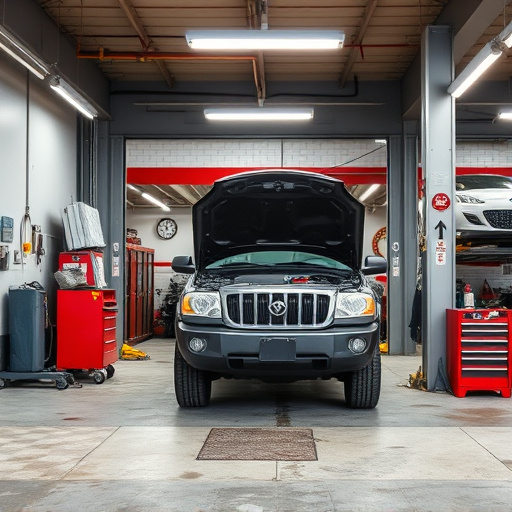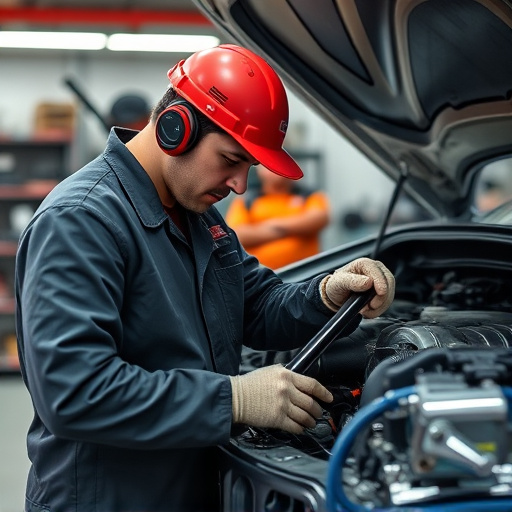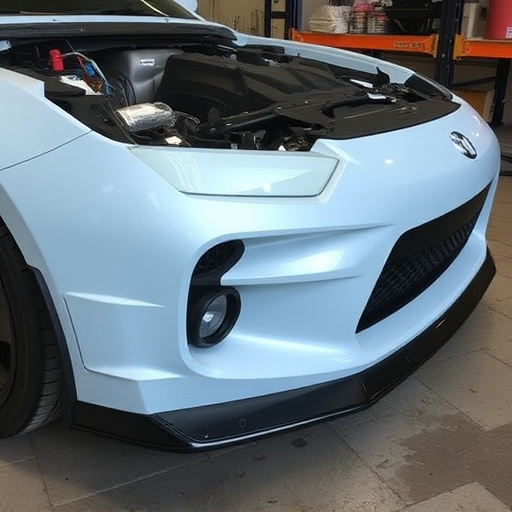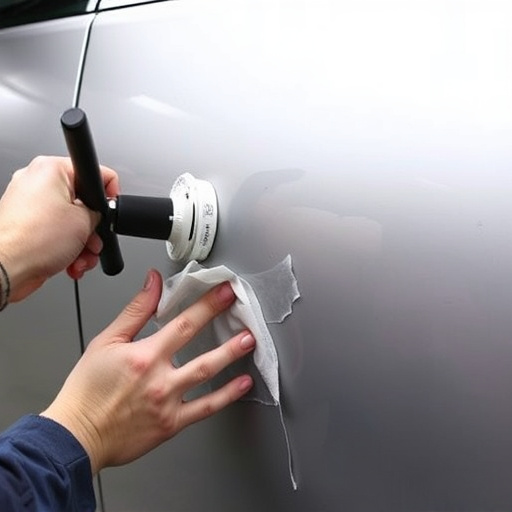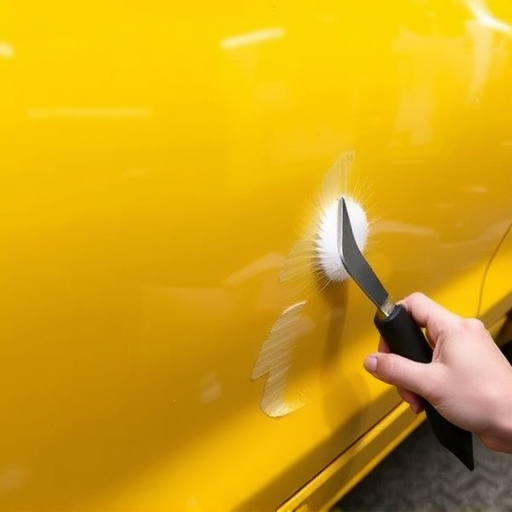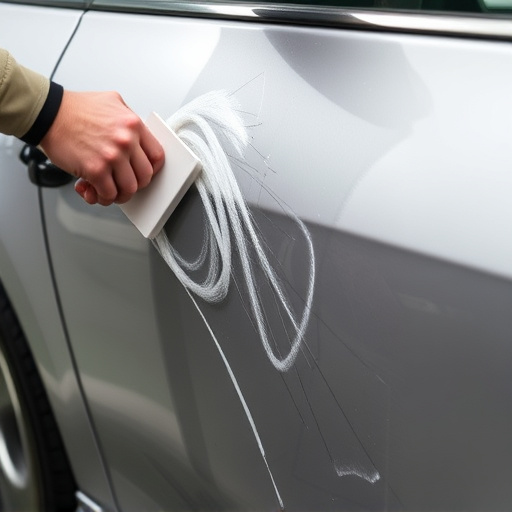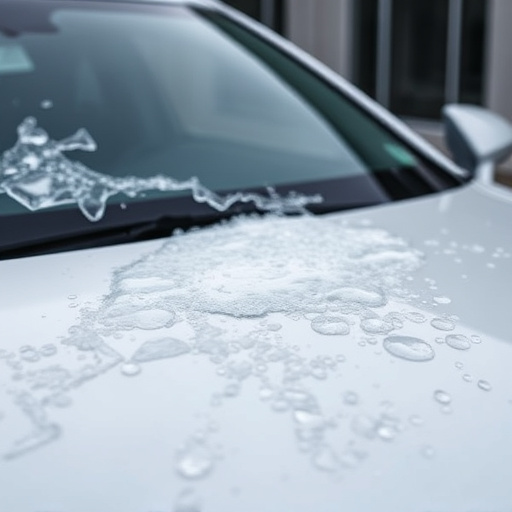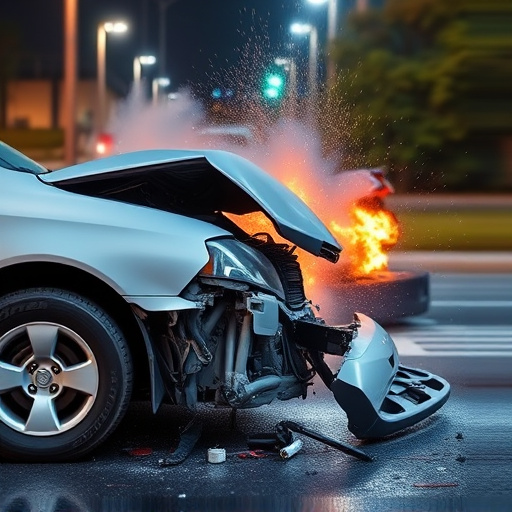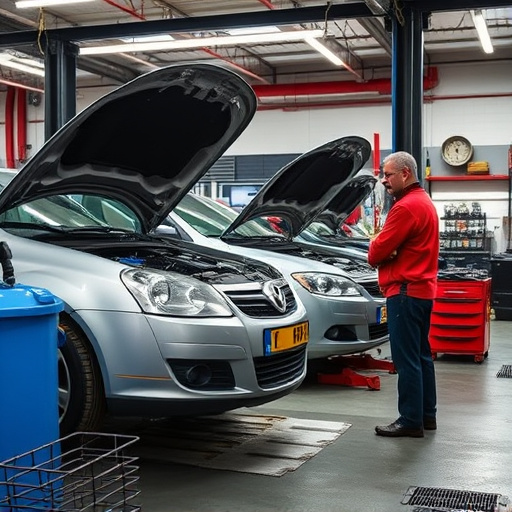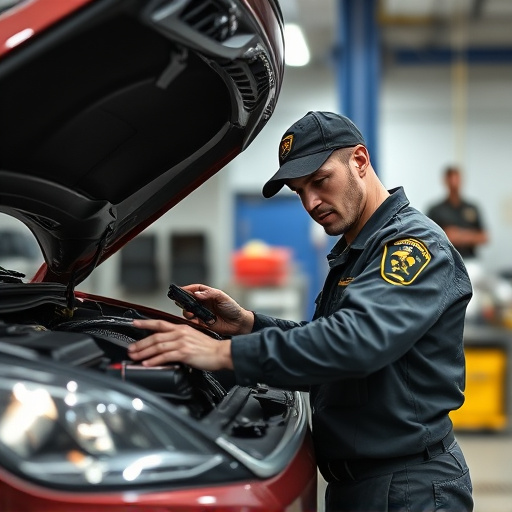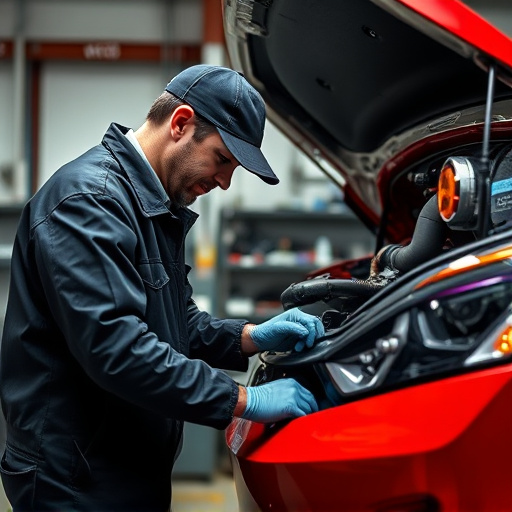Tesla airbag system repair is vital for safety. Diagnosing faulty crash detectors using advanced tools is a critical step. Repairs require specialized knowledge and equipment, such as paintless dent repair, to ensure optimal functionality and vehicle safety. Following strict protocols, including gear safety measures, diagnostic checks, sensor/software replacements, calibration, deployment testing, and adherence to Tesla specs, guarantees effective airbag system restoration using professional EV repair services.
Tesla vehicles are renowned for their cutting-edge technology, but even these advanced cars aren’t immune to malfunctions. One critical component is the airbag system, which requires careful attention and maintenance. If your Tesla’s crash detectors fail, it could impact the overall safety of the vehicle. This article guides you through understanding common issues with Tesla’s airbag systems, diagnosing faulty crash detectors, and provides a step-by-step repair process to ensure your car is safe on the road again.
- Understanding Tesla Airbag System Malfunctions
- Diagnosing Crash Detectors for Repairs
- Step-by-Step Guide to Airbag System Repair
Understanding Tesla Airbag System Malfunctions
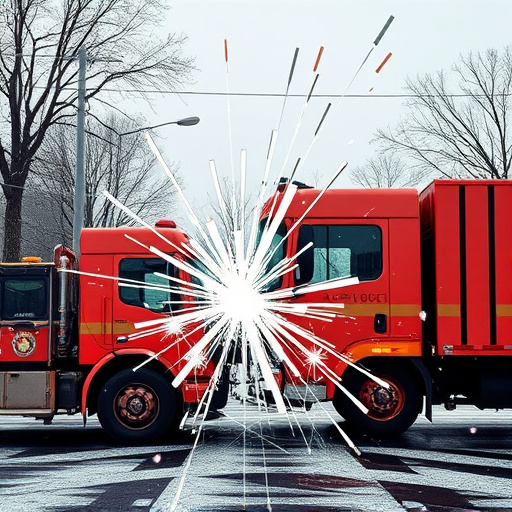
The Tesla airbag system is a complex network designed to protect passengers in the event of a collision. When malfunctioning, it can pose significant risks. Understanding how this system works and common issues that lead to its failure is crucial for effective repairs. A faulty crash detector, for instance, could result in an airbag not deploying when needed, highlighting the importance of professional intervention.
Tesla Airbag System Repair involves more than just fixing a mechanical malfunction; it requires specialized knowledge to ensure the safety of every vehicle. Techniques like paintless dent repair can be employed to restore dents caused by accidents, preserving the vehicle’s aesthetics while addressing underlying structural issues. This meticulous approach, coupled with expert technicians and high-quality parts, is essential for restoring your Tesla’s airbag system to its optimal functioning state, enhancing both safety and peace of mind for drivers.
Diagnosing Crash Detectors for Repairs
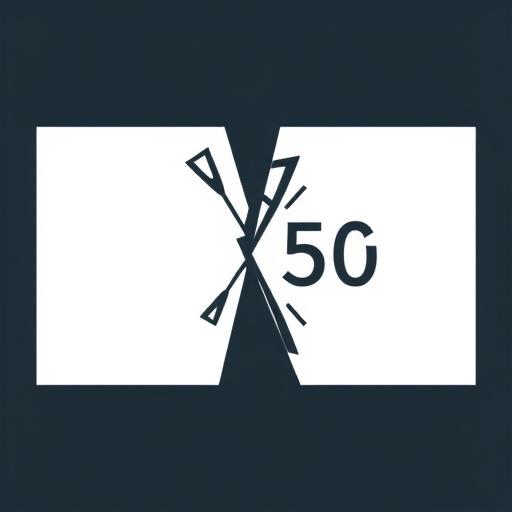
Diagnosing crash detectors is a critical step in Tesla airbag system repair. At a reputable auto repair shop, technicians employ advanced diagnostic tools to scrutinize the vehicle’s collision detection sensors and modules. These components play a pivotal role in triggering airbags during accidents, ensuring passenger safety. By identifying faulty sensors or modules, professionals can pinpoint the exact source of the malfunction, enabling them to provide targeted repairs for optimal airbag performance.
Accurate diagnosis involves examining the crash detector’s functionality, electrical connections, and signal integrity. Technicians may also compare data from the vehicle’s onboard computer to industry standards and known good units. This meticulous process is essential for effective vehicle collision repair and restoration, ultimately enhancing the safety features of the Tesla vehicle for future incidents.
Step-by-Step Guide to Airbag System Repair

Repairs to a Tesla’s airbag system, particularly when addressing faulty crash detectors, require meticulous attention to detail and specialized knowledge. Here’s a step-by-step guide for those undertaking this task:
1. Safety First: Ensure the vehicle is secured and powered off before beginning any repair work. Put on appropriate safety gear, including gloves and eye protection, as you’ll be handling sensitive electronic components and potentially dealing with sharp edges.
2. Diagnose the Problem: Utilize diagnostic tools to identify the faulty crash detector. This might involve scanning for error codes or manually testing individual sensors using a multimeter. This step is crucial in pinpointing the exact issue, whether it’s a malfunctioning sensor, a software glitch, or a physical damage-related problem.
3. Isolate and Replace: If a sensor is defective, carefully disconnect and replace it following Tesla’s specific guidelines. For software issues, access the vehicle’s computer system through specialized tools to rectify the problem. In case of physical damage, such as a punctured airbag or torn deployment mechanism, the affected components need to be replaced with genuine Tesla parts.
4. Calibrate and Test: After installing new or repaired parts, calibrate the airbag system using the appropriate diagnostic software. This step ensures that all sensors are functioning accurately and cohesively. Follow up with a full airbag test to verify proper deployment and ensure passenger safety.
5. Quality Assurance: Throughout the repair process, adhere strictly to Tesla’s recommended procedures and parts specifications. Engaging professional vehicle repair services specializing in electric vehicles (EVs) can offer expert guidance and guarantee a high-quality repair that meets Tesla’s stringent standards. Remember, the airbag system is critical for passenger safety, so no corners should be cut when undertaking these repairs.
In light of the above, it’s clear that addressing faulty Tesla airbag systems, particularly crash detectors, is a critical safety measure. By understanding common malfunctions, diagnosing issues effectively, and following a structured repair guide, owners can ensure their vehicles’ airbag systems are reliable. Remember that prompt action on any airbag-related concerns can significantly enhance passenger safety during potential crashes. For those tackling Tesla airbag system repair, this step-by-step approach serves as a valuable resource to get the job done right.

